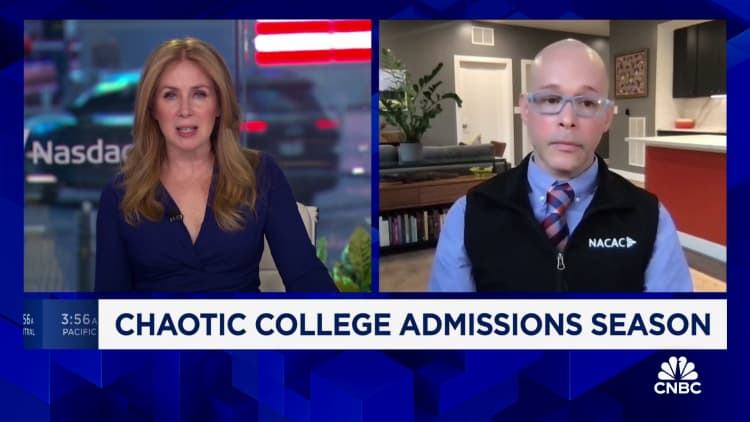As more borrowers qualify for student loan forgiveness, incoming college freshmen are set to rack up $37,000 in new debt, report finds

Every year, millions of new students are pumped into the student loan system while current borrowers struggle to exit it.
This year, the Biden administration’s new student loan forgiveness plan could start clearing debt for millions of borrowers as soon as this this fall — just as incoming college freshmen start racking up new balances on their path to a degree.
In fact, 2024 high school graduates going on to a four-year school will rely on loans even more, a new report shows.
More from Personal Finance:
FAFSA ‘fiasco’ could cause decline in college enrollment
Harvard is back on top as the ultimate ‘dream’ school
More of the nation’s top colleges roll out no-loan policies
These college hopefuls could take on as much as $37,000, on average, in student debt to earn a bachelor’s degree, according to a NerdWallet analysis of data from the National Center for Education Statistics. The analysis was conducted before recent problems with the Free Application for Federal Student Aid.
Once families hit their federal student loan limits, they often turn to parent student loans and private financing to be able to send their children off to college, the report also found.
How student loan debt became a crisis
Tuition and fees have more than doubled over the past 20 years, reaching $11,260 at four-year, in-state public colleges, on average, in the 2023-24 academic year. At four-year private colleges, it now costs $41,540 annually, according to the College Board, which tracks trends in college pricing and student aid.
“Tuition has been going up faster than inflation for decades and incomes have not kept up,” said Sandy Baum, senior fellow at Urban Institute’s Center on Education Data and Policy. “It’s a serious problem.”
Without financial aid, the price tag at some four-year colleges and universities — after factoring in tuition, fees, room and board, books, transportation and other expenses — is now nearing $100,000 a year.
Because so few families can shoulder the rising cost, they increasingly turn to federal and private aid to help foot the bills.
“Tuition and fees is less than half of the total cost of college,” said Ellie Bruecker, interim director of research at The Institute for College Access and Success. “Students will still need financial aid to pay for other needs.”
How families pay for college
As of last year, the amount families actually spent on education costs was $28,026, on average, according to Sallie Mae’s annual How America Pays for College report — up more than 10% from a year earlier.
While parent income and savings cover nearly half of college costs, free money from scholarships and grants accounts for a more than a quarter of the costs and student loans make up most of the rest, the education lender found.
Scholarships are a key source of funding, yet only about 60% of families use them, Sallie Mae found. Those that did, received $8,149, on average.
The vast majority of families who didn’t use scholarships said it was because they didn’t even apply.
Why fewer students are filling out a FAFSA
To get college aid, students must first file a FAFSA.
The FAFSA serves as the gateway to all federal aid money, including loans, work study and scholarships and grants, which are the most desirable kind of assistance.
This year, problems with the new FAFSA have discouraged many high school seniors and their families from completing an application.
As of April 12, only 29% of the high school class of 2024 had completed the FAFSA, according to the National College Attainment Network, a 36% decline compared to a year ago.
With enrollment deadlines approaching, fewer students have figured out how they will pay for college next year.
“Even if all of this had gone perfectly, the financial aid system doesn’t have the same buying power it had years ago,” Bruecker said.
Source – CNBC




